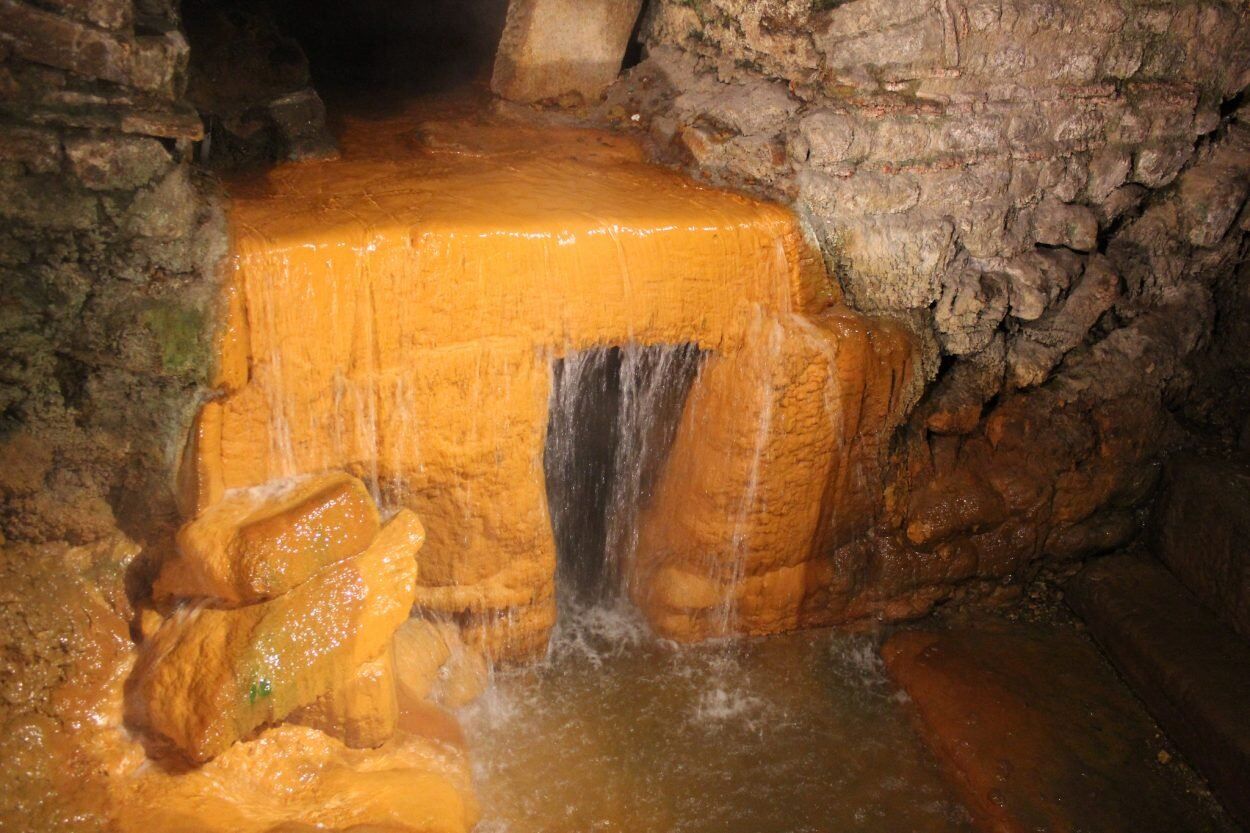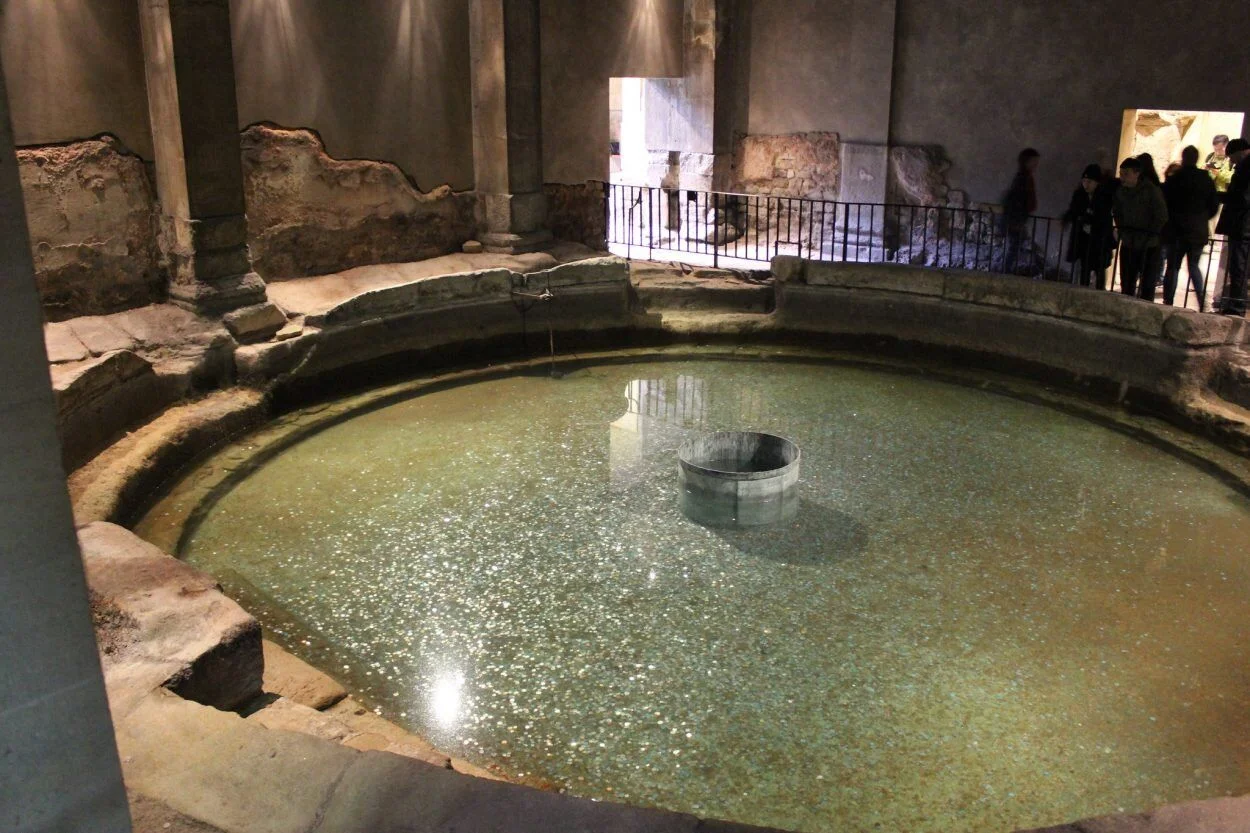Aquae Sulis, meaning “the waters of Sulis” was a Roman town in the province of Britannia, located in the modern-day city of Bath in England.
The site was first occupied by the Iron Age Dobunni, who worshipped the Goddess Sulis at a sacred hot spring. In Geoffrey of Monmouth’s “Historia Regum Britanniae”, he fancifully described that the sacred springs were discovered by Kind Bladud who founded the first ancient baths and the city in situ.
The spring is heated by geothermal activity that causes mineral-rich water to rise to the surface through fissures and faults in the limestone rock at a temperature of 45° C. The whole water cycle takes 10,000 years, starting as rain on the Mendip Hills, but more recent findings suggest that the rainwater enters through the carboniferous limestone near Bath and the Avon Valley.
The water then percolates through aquifers to a depth of 2,700 and 4,300 metres where it is heated to a temperature between 69 and 96 °C and rises to feed three hot springs in the centre of the City.

After the Roman conquest across Britannia in AD43, a formal temple complex was constructed at Aquae Sulis around AD60 and was adapted to the worship of Minerva, the Roman goddess of wisdom and strategic warfare, and the sponsor of arts, trade, and strategy.
Over the centuries, a substantial Roman bathing complex developed with a caldarium (hot bath), tepidarium (lukewarm bath), and frigidarium (cold bath) that was associated with the adjoining temple.

Aquae Sulis was situated near to a strategic crossing point of the River Avon and the intersection of four major Roman roads located at Walcot, a suburb of modern-day Bath where the main site of Roman habitation has been identified.
The bathing and temple complex was surrounded with a stone wall, constructed during the 3rd Century AD that encircled an area of 23 acres, although whether this was defensive is debated.
The Roman town has created a perplexing debate amongst academics, as the ribbon of habitation along Walcot appears to be the main population centre, whilst the buildings constructed within the town walls may have been to service, or were associated with the temple and bathing complex (still debated).
Many internal civic buildings have been suggested, such as a praetorium, fabrica armorum, forum, basilica and several temples, but no inscriptions mention municipal life at Bath, and no structural remains are indicative of a forum or basilica.

By AD 370-420, Aquae Sulis was in decline due to the economic collapse of the period, evident by the decline in maintenance of the Temple of Sulis Minerva in the late fourth century and the conversion of many public buildings for other uses. By AD 500, Aquae Sulis was in disrepair and was supposedly destroyed in the 6th century according to the Anglo-Saxon Chronicle.
The baths have been modified on several occasions, including the 12th century, when John of Tours built a curative bath over the King’s Spring reservoir, and the 16th century, when the city corporation built a new bath (Queen’s Bath) to the south of the spring. The spring is now housed in 18th-century buildings, designed by architects John Wood, the Elder and John Wood, the Younger, father and son.
Header Image Credit : Diego Delso





